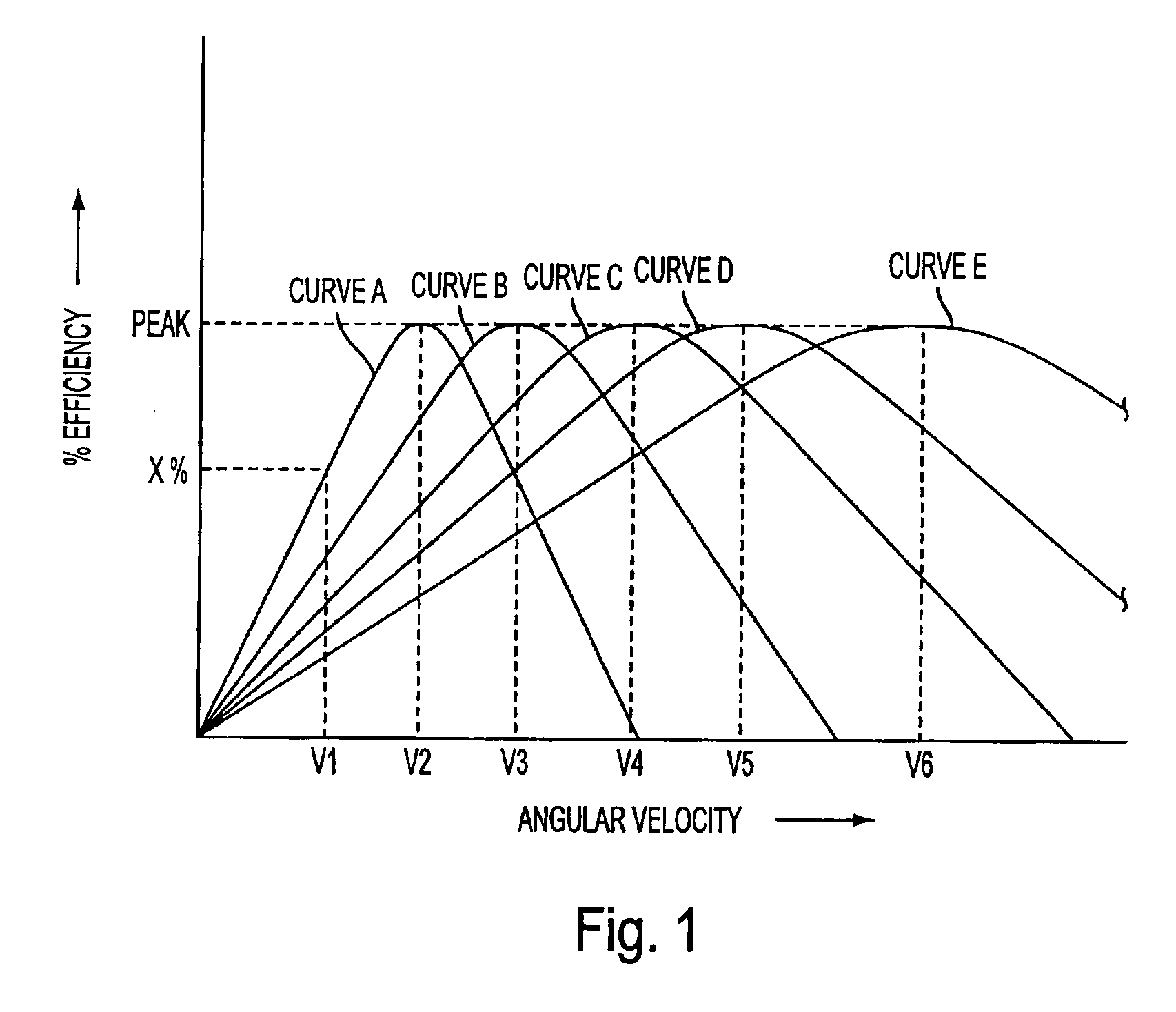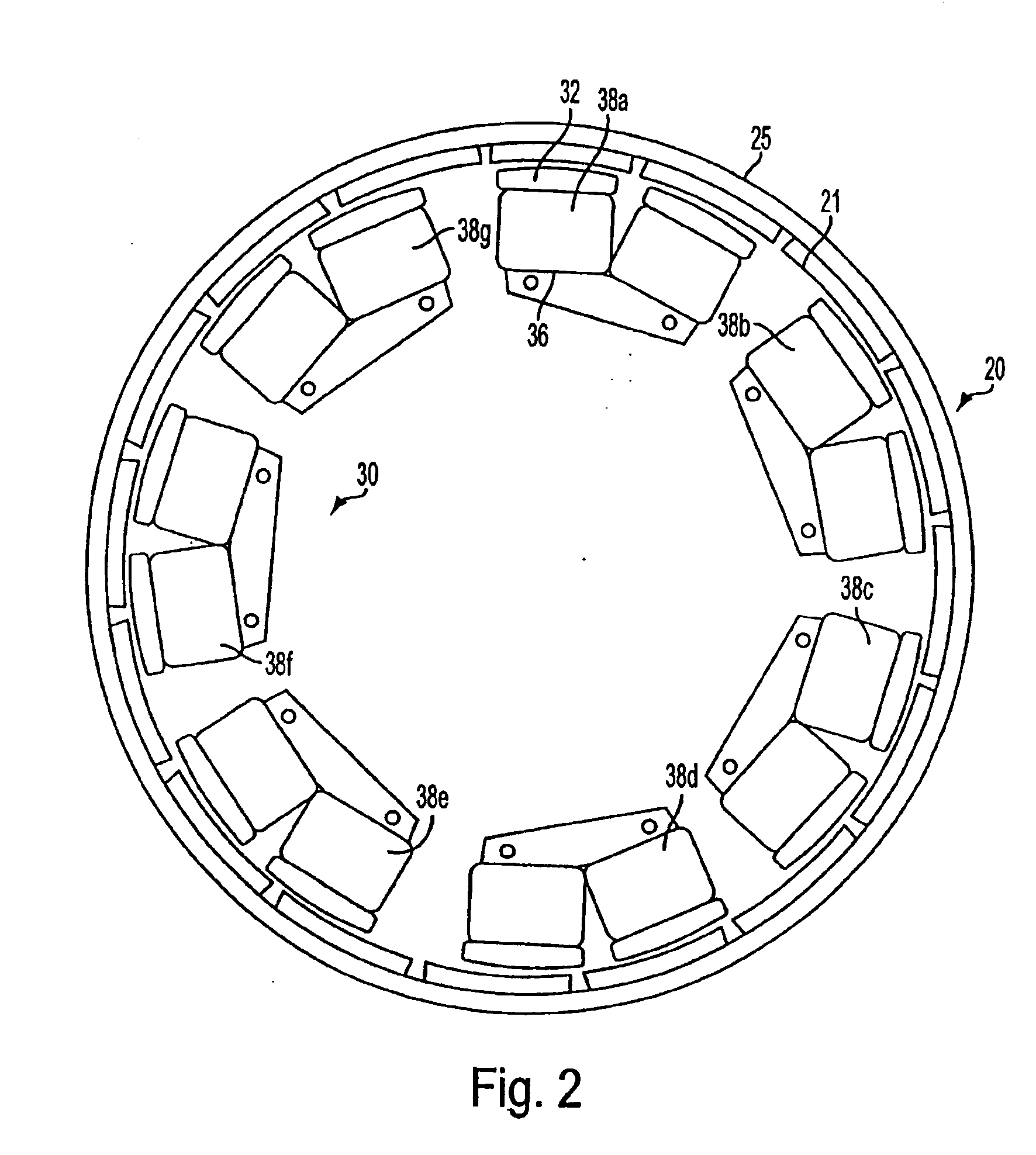Dynamoelectric machine having windings that differ in wire gauge and number of winding turns
a technology of dynamoelectric machines and windings, which is applied in the direction of windings, rotating magnets, mechanical energy handling, etc., can solve the problems of unacceptable efficiency of motors and prior art motors over the entire range of motor operating speeds, limited operating range, and low efficiency of motors. achieve the effect of wide operating speed range, improved efficiency, and high degree of precision controllability
- Summary
- Abstract
- Description
- Claims
- Application Information
AI Technical Summary
Benefits of technology
Problems solved by technology
Method used
Image
Examples
Embodiment Construction
FIG. 2 is an exemplary configuration of rotor and stator elements that may be employed in the present invention. Reference is made to the above identified copending Maslov et al. application Ser. No. 09 / 826,422 for a more detail description of the motor exemplified herein. Rotor member 20 is an annular ring structure having permanent magnets 21 spaced from each other and substantially evenly distributed along cylindrical back plate 25. The permanent magnets are rotor poles that alternate in magnetic polarity along the inner periphery of the annular ring. The rotor surrounds a stator member 30, the rotor and stator members being separated by an annular radial air gap. Stator 30 comprises a plurality of electromagnet core segments of uniform construction that are evenly distributed along the air gap.
The stator comprises seven core segments, each core segment formed in a generally unshaped magnetic structure 36 with two poles having surfaces 32 facing the air gap. The legs of the pole ...
PUM
 Login to View More
Login to View More Abstract
Description
Claims
Application Information
 Login to View More
Login to View More - R&D
- Intellectual Property
- Life Sciences
- Materials
- Tech Scout
- Unparalleled Data Quality
- Higher Quality Content
- 60% Fewer Hallucinations
Browse by: Latest US Patents, China's latest patents, Technical Efficacy Thesaurus, Application Domain, Technology Topic, Popular Technical Reports.
© 2025 PatSnap. All rights reserved.Legal|Privacy policy|Modern Slavery Act Transparency Statement|Sitemap|About US| Contact US: help@patsnap.com



